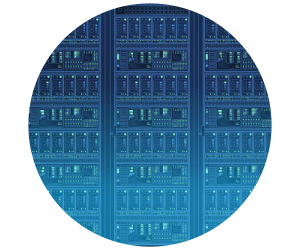Consider When to Stay the Course with Mainframes
Agencies depend on mainframes to run various vital services, from tax systems to vehicle registrations to benefits programs such as the Supplemental Nutrition Assistance Program and Temporary Assistance for Needy Families. If a mainframe goes down, those processes could screech to a halt. That’s not just an inconvenience. It could mean that residents are temporarily unable to purchase food or access healthcare.
Meanwhile, mainframe failures can result in operational disruptions and costly remediations for agencies. They can likewise impede an organization’s ability to carry out its mission and erode the public’s trust in government. Those are some of the reasons agencies have been investing in cloud migrations. Cloud platforms and cloud-native applications promise more cost-efficient maintenance and scalability, with greater flexibility for better customer experiences.
But cloud migration isn’t the answer in every situation. If a particular use case has been running well on a mainframe, if the application and data would be costly and time-consuming to rearchitect, or if current budgets don’t allow for major transformations, then there’s a strong case for extending mainframe ROI in the short to medium term.
DISCOVER: Governments ensure continuity by backing data up to cloud.
Maximize Return on Investment with Mainframe Modernization
Maximizing mainframe ROI doesn’t mean simply sticking with a decades-old piece of hardware. Continuing to benefit from mainframe technology requires a thoughtful strategy that brings the mainframe into the modern world while preparing the organization for future migrations.
First, agencies should consider upgrading to the latest mainframe hardware and operating system. Older mainframes are wearing out, and their maintenance regimen can be laborious and costly.
New mainframes are modern platforms with a much smaller physical footprint, lower power demands, and simpler management and maintenance. They can run alongside modern operating systems and integrate through middleware with hybrid clouds. They can even offer built-in artificial intelligence capabilities and protections against emerging cyberthreats.
Mainframe vendors want to retain their customers, so they try to make upgrading attractive. In many cases, investing in the latest mainframe platform could prove more cost-effective than maintaining an older version. It may also improve system reliability, as modern mainframes are simpler to operate and maintain.
READ MORE: Cities can use AI to enhance services and streamline operations.
Architect Application Stacks to Accommodate Containers
Second, agencies should start rearchitecting their application stack while they continue running their mainframes. Modern mainframes, for instance, support the use of flexible application strategies such as containerization and container orchestration.
Containers package each application along with everything it needs to run smoothly, such as software functions and routines. That makes it easier to manage applications and move them from one platform to another, giving organizations better flexibility and scalability.
Container orchestration coordinates multiple containers across servers, ensuring that they communicate correctly, scaling them based on demand and managing their lifecycles. Open source container orchestration platforms, such as Kubernetes, automate management of containers to make sure they operate efficiently and reliably.
Agencies can update their mainframe applications even as they plan to eventually migrate to a cloud environment. They can run platforms such as Kubernetes on the mainframe to modernize both applications and application development and then use Kubernetes as their bridge to the cloud.
LEARN MORE: Consider how agencies might move on from mainframes.
Upskill Government Employees for the Modern Mainframe
Finally, organizations will need to modernize their IT skill sets along with the technology. Agencies across the government face a technical talent shortage – especially when it comes to older technologies such as mainframe hardware, software and programming languages.
One way to address this skills shortage is through the automation of mainframe management. Experienced senior staff can use automation tools, including AI, to build playbooks that streamline routine mainframe maintenance tasks. Staff with less experience can then oversee those repeatable steps. Such automation also makes mainframes, and the services that run on them, more dependable.
Agencies should also provide technical teams with opportunities for training and certification in both older and emerging technologies. Younger employees may be willing to learn modern mainframe systems if they also gain skills in newer strategies and platforms such as containerization and Kubernetes. Investment in those skill sets will continue to pay dividends as the organization eventually migrates to a cloud-native environment.
Many state and local agencies still have use cases for which a mainframe makes sense. With the right strategy, they can sustain mainframe resilience and ROI while progressing in their digital transformation journeys.











